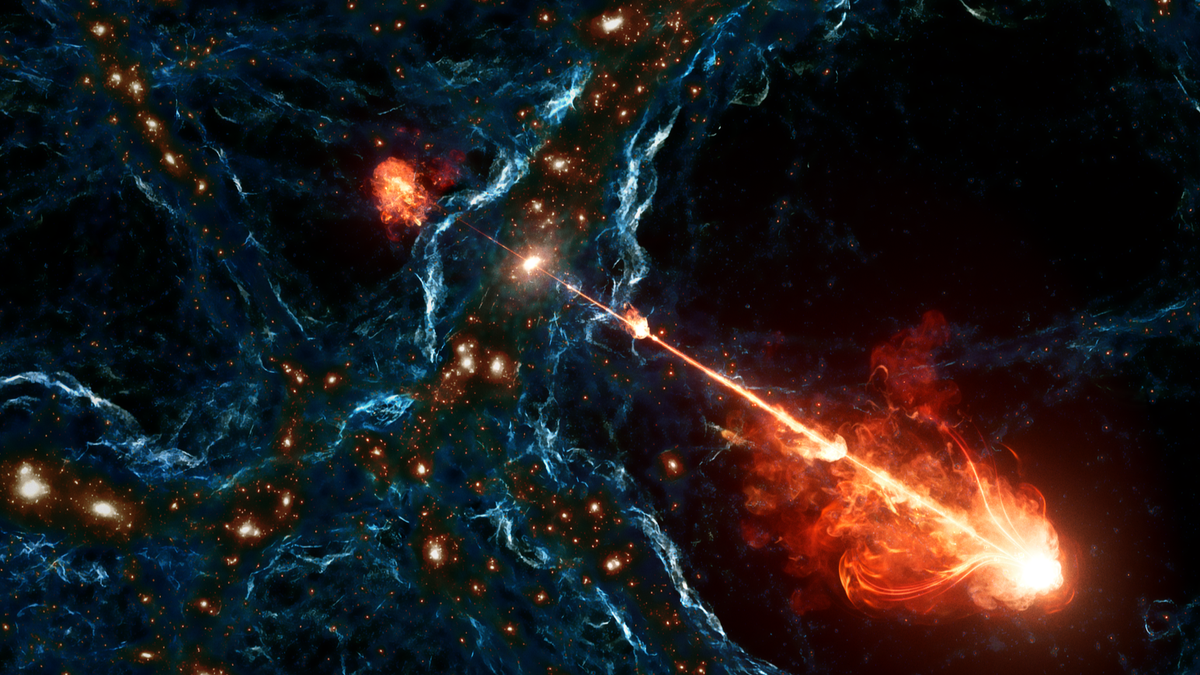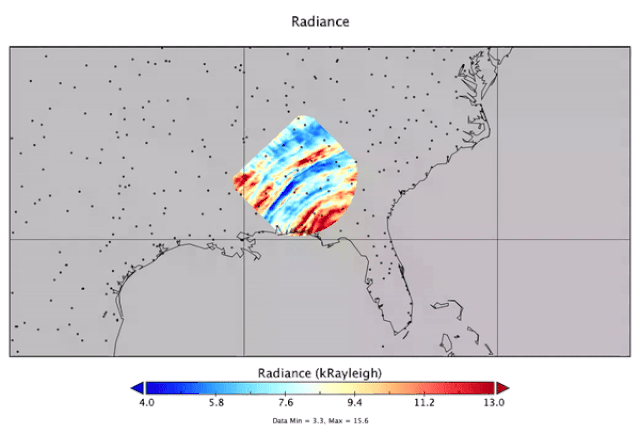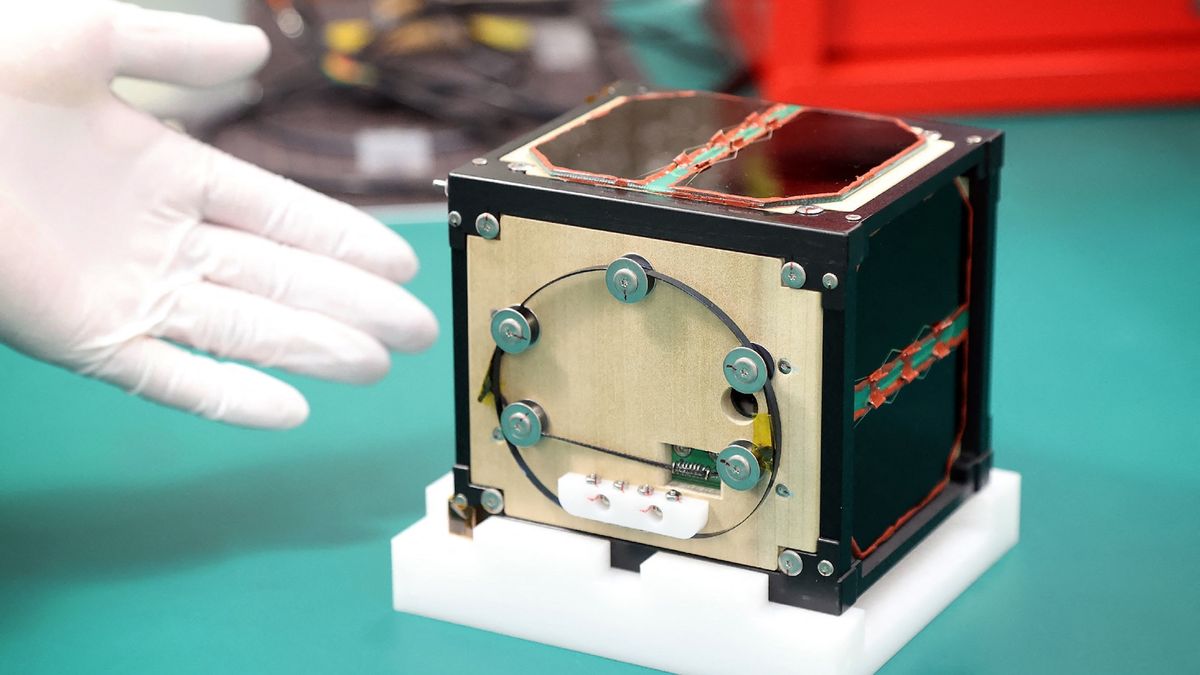Astronomers have spotted the biggest pair of black hole jets ever seen — at 23 million light-years in length, they are as long as 140 Milky Way galaxies laid end to end.
The enormous jet pair, nicknamed Porphyrion after a giant in Greek mythology, are gigantic beams of ionized matter that erupted from a black hole at close to light speed. Their origin is a massive black hole 7.5 billion light-years away from Earth, which they burst from with the power of trillions of stars.
The jets were discovered among 10,000 others in a survey by Europe’s Low Frequency Array (LOFAR) radio telescope. By studying the tendrils of these colossal outflows, scientists hope to understand how they shaped the early cosmos into the form we see today. The researchers published their findings Sept. 17 in the journal Nature.
“This pair is not just the size of a solar system, or a Milky Way; we are talking about 140 Milky Way diameters in total,” study lead author Martijn Oei, a postdoctoral scholar of observational astronomy at Caltech, said in an email statement. “The Milky Way would be a little dot in these two giant eruptions.”
Supermassive black holes typically sit at the centers of galaxies, sucking in matter from their surroundings before spitting it out at extreme speeds, creating a feedback process that shapes how galaxies evolve.
But scientists still don’t fully understand how the cosmic engines and the jets they expel affect the galaxies around them.
Related: Monster black hole is starving its host galaxy to death, James Webb telescope reveals
To better answer that question, the researchers searched for hidden black hole jets by scanning the LOFAR radio images by eye, using machine learning tools and citizen scientists to help identify any jets they missed.
Once they spotted the first hints of Porphyrion’s gigantic wisps of gas, the researchers turned to follow-up observations using India’s Giant Metrewave Radio Telescope (GMRT) and the Dark Energy Spectroscopic Instrument (DESI) in Arizona to trace the jets’ origins to a massive galaxy that’s about 10 times bigger than the Milky Way.
Further observations made with the Keck Observatory in Hawaii revealed the exact location of Porphyrion and showed that its plumes stretched far into the superhighways of filaments that connect and feed galaxies, which is known as the cosmic web.
“Up until now, these giant jet systems appeared to be a phenomenon of the recent universe,” Oei said. “If distant jets like these can reach the scale of the cosmic web, then every place in the universe may have been affected by black hole activity at some point in cosmic time.”
Porphyrion’s enormous size — roughly 40 Milky Ways bigger than the previously biggest known jet structure named Alcyoneus — suggests that the belchings of supermassive black holes played an even more pivotal role in the formation of today’s universe than first thought.
Porphyrion also emerged from a type of black hole that is common in the early universe but was not previously thought to produce giant jets, meaning that more of these eruptions could be lurking in the early universe.
“We may be looking at the tip of the iceberg,” Oei said. “Our LOFAR survey only covered 15 percent of the sky. And most of these giant jets are likely difficult to spot, so we believe there are many more of these behemoths out there.”
The researchers’ next steps will be to investigate how gigantic jets shaped the early universe as they spewed? cosmic rays, heavy atoms, heat and magnetic fields across galaxies.
“The magnetism on our planet allows life to thrive, so we want to understand how it came to be,” Oei said. “We know magnetism pervades the cosmic web, then makes its way into galaxies and stars, and eventually to planets, but the question is: Where does it start? Have these giant jets spread magnetism through the cosmos?”














